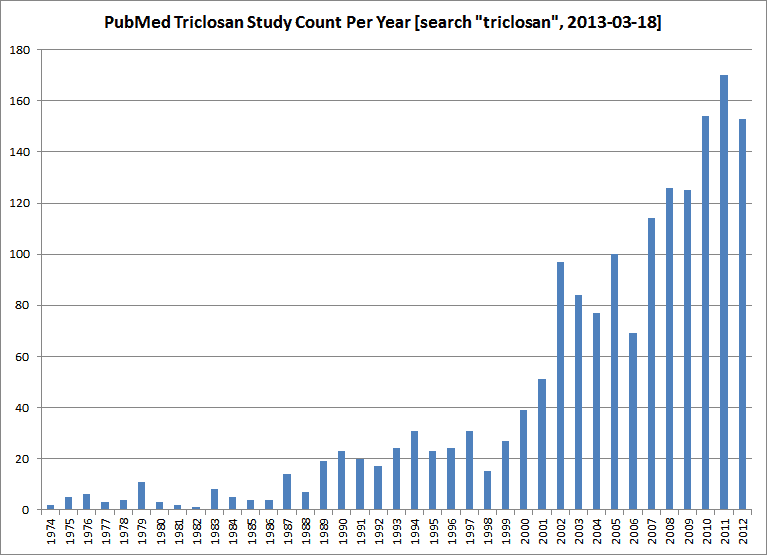Triclosan is a common antimicrobial and antifungal agent found in consumer products, including soaps, detergents, toys and, surgical cleaning treatments. The effectiveness of Triclosan has been questioned many times, with studies showing that in the long run, it may actually have negative effects by creating bacterial resistance. Now, a new study on mice has found that long term exposure to the chemical raises susceptibility to cancer.
Antimicrobial soap might cause cancer

Triclosan is almost ubiquitous in hygiene products. It’s found in soaps, shampoos, toothpastes and many other household items. Just so you can get an idea, a previous study has found traces in 97 percent of breast milk samples from lactating women and in the urine of nearly 75 percent of people tested.
Despite its widespread use, researchers at University of California, San Diego School of Medicine report potentially serious consequences of long-term exposure to the chemical. Basically, Triclosan makes mice more susceptible to liver tumors.
“Triclosan’s increasing detection in environmental samples and its increasingly broad use in consumer products may overcome its moderate benefit and present a very real risk of liver toxicity for people, as it does in mice, particularly when combined with other compounds with similar action,” said Robert H. Tukey, PhD, professor in the departments of Chemistry and Biochemistry and Pharmacology. Tukey led the study, together with Bruce D. Hammock, PhD, professor at University of California, Davis.
The team found that Triclosan exposure interferes with the constitutive androstane receptor, a protein responsible for detoxifying (clearing away) foreign chemicals in the body. This causes an imbalance in the liver, and in order to compensate, the liver starts to proliferate cells more and more, until some of them start to turn fibrotic. Liver fibrosis eventually promotes tumor formation.
Still, maybe it’s improper to say that Triclosan causes cancer – but it creates very suitable conditions for cancer development. Triclosan has been associated with a higher risk of food allergy. This may be because exposure to bacteria reduces allergies, as predicted by the hygiene hypothesis and not toxicology of the chemical itself.
Triclosan is also very common in the environment, where it also has negative effects. The duration of triclosan in personal product use is relatively short. Upon disposal, triclosan is sent to municipal wastewater treatment plants, where about 97-98% of triclosan is removed. Studies show that substantial quantities of triclosan (170,000 – 970,000 kg/yr) can break through wastewater treatment plants and damage algae on surface waters. Other effects are still studied.

“We could reduce most human and environmental exposures by eliminating uses of triclosan that are high volume, but of low benefit, such as inclusion in liquid hand soaps,” Hammock said. “Yet we could also for now retain uses shown to have health value — as in toothpaste, where the amount used is small.”
It’s clear that the chemical has such a widespread use because it is effective – but it’s high time that Triclosan came under more serious scrutiny.
Recently, Colgate Total, one of the most popular toothpastes out there was also investigated for its high Triclosan content. An Australian study by academics at the University of Queensland found that over the course of four years, triclosan toothpaste had no ill-effect on the hormonal function of humans. The grant for the majority of the research was provided by Colgate. Nope, not biased; not biased at all.
Journal Reference: Mei-Fei Yueh, Koji Taniguchi, Shujuan Chen, Ronald M. Evans, Bruce D. Hammock, Michael Karin, and Robert H. Tukey. The commonly used antimicrobial additive triclosan is a liver tumor promoter. PNAS, November 17, 2014 DOI: 10.1073/pnas.1419119111



